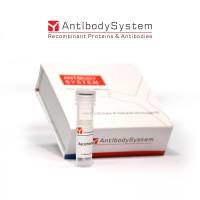Transfection Complexes Generated with Adenovirus and Polyethylenimine-Condensed DNA
互联网
531
Many types of viral infection produce a transient permeabilization of the Infected cell (see refs. 1 and 2 ; reviewed in refs. 3 and 4 ). A large improvement in transfection efficiency was obtained when this phenomenon was applied to receptor-mediated gene delivery (5 ). A number of permeabilizing agents have now been used to enhance gene transfer, but adenovirus is by far the most potent (6 ,7 ). The augmentation of DNA delivery by adenovirus particles is primarily due to enhancement of cytoplasmic entry of DNA; however, viral components may also serve additional functions that promote transfection, such as generating alterations in the cytoskeleton of the transfected cell (8 ) or in promoting nuclear entry (9 ,10 ). The most efficient varrations of this method employ some form of linkage between the adenovirus and the plasmid DNA, thus ensuring that each viral entry event is linked to plasmid DNA entry. There are now a number of methods of linking DNA to carrier adenovirus. A versatile method involves biotinylating the adenovirion and linking the plasmid DNA with a streptavidin-polylysine bridge (6 ). Other methods include direct chemical linkage between virus and polylysine (11 –14 ), as well as an enzymatic linkage using transglutaminase (15 ,16 ). The drawbacks with the direct virus-polylysine linkage methods are the generation of a fixed virus-to-polylysine ratio (limiting titration possibilities), and the storage difficulties of polylysine-adenovuus that necessitate the use of high tonic strengths. A coupling technique using antibody-polylysine binding to an adenovirus epitope has been described that allows a greater degree of flexibility in virus-polylysine ratios (17, but requires both an epitope-tagged virus and a special antibody-polycation conjugate.






